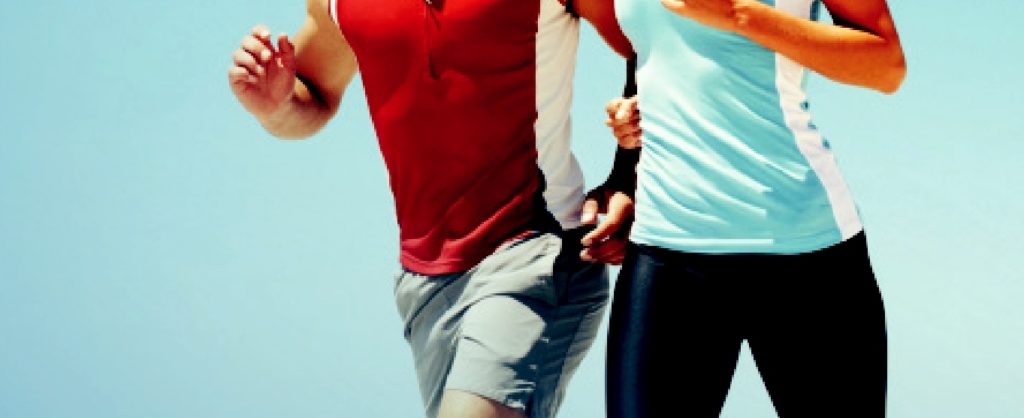How to keep nasty problems at bay while training
MUSCLE SORENESS AND STRAIN:
Overdone it in a training session and feeling the pain the next day? Exercise physiologist and HBF health promotions manager Jenny Carter said warm-ups, cool-downs and stretching were all important in preparing for activity, keeping flexible and looking after muscles and joints.
“Good running shoes and socks and running gear are all vital too, especially if it is not a distance you have run before as the extra kilometres can take their toll,” Ms Carter said
“Good running technique can also play a part in reducing injury and trainers and many good sports stores can assist with this.”
Ms Carter (nee Flaherty) has been involved in running for more than 20 years and has represented Australia at the Commonwealth Games as a sprinter, winning a national 100m sprint title in 1985.
She added that you should take time out too.
“Recovery and rest days are important to replenish energy stores and repair damaged tissues,” she said. “Overuse symptoms can develop if you don’t listen to your body and injuries can prevent you from getting to the big event. Getting a good night’s sleep will help in the recovery process so try and get into regular sleep patterns.”
BLISTERS:
Blisters could be the bane of many a pro runner so minimise your chances with shoes that fit properly and ideally had been fitted by a sports shoe specialist, who could recommend the right type of shoe for your feet and the event, said Ms Carter.
“The most common cause of blisters is skin rubbing against the shoe,” she said.
“Good running socks should be worn to protect the formation of blisters – choose synthetic, not cotton. The socks should be smooth and seamless and absorb moisture away from your feet.
“Sometimes a foot powder or inexpensive blister-relief product can prevent blisters forming. Make sure you have trialled the socks in your training preparation so on the day of the run you won’t need to worry about blisters.”
STOMACH PROBLEMS AND DEHYDRATION:
According to accredited practising dietitian, sports dietitian and performance expert Julie Meek, runners could be twice as likely as other athletes to experience bowel discomfort.
“This could be due to the movement of blood away from the gastrointestinal tract to working muscles, the physical movement of the gut when running and/or altered neurological and hormonal functions,” she said.
“Females and those prone to nervous anxiety are more commonly affected by gut disturbances.”
Ms Meek said the problem was usually not so much running as dehydration.
“A lack of blood flow to the gut has been shown to be the main cause of nausea, abdominal pain, vomiting and diarrhoea,” she said. “Prolonged, high-intensity exercise such as marathons and triathlon endurance events can cause body temperature to increase as high as 41C, which is high enough to cause symptoms of heat stress.”
When significant dehydration had also occurred, the decreased blood volume resulted in further reducing blood flow to the gut.
“The greater the degree of dehydration the greater the reduction in blood flow to the gut increasing the likelihood of gastrointestinal disturbance and pain,” Ms Meek said.
To avoid stomach problems and dehydration, start exercise sessions well-hydrated and try to drink around 150-250ml of water every 15 minutes.
“Fluid recovery is essential,” Ms Meek said.
For sessions one hour or longer, drink electrolyte sports drinks.
Ms Carter said diet could play a factor as stomach upsets and nausea were often caused by not having adequate amounts of food, eating too close to the event or not eating the right type of foods.
“Drinking large volumes of water just before a big run can also have an effect so sip small amounts more often,” she said.
Before race day, ensure you eat plenty of low-glycaemic carbohydrates such as bagels, wholegrain bread, bananas, apples, oatmeal and wheat cereals.
“Energy bars and sports drinks can provide quick bursts of energy and, remember, it is just as important to eat and drink well after the event to replenish the body of its missing fluids and nutrients,” she said.
NIPPLE BLEEDS:
Ms Carter said nipple bleeds were a little-known problem to non- runners but unfortunately could strike people in training.
“This is a condition suffered by runners and is caused by the friction of clothing rubbing while running,” she said.
“Wear technical shirts made of synthetic fabrics, not cotton – there are plenty of these available in good sports stores. A sports bra or compression vest can also protect the rubbing affect. An anti-chafing balm, Vaseline or a small waterproof bandage or surgical tape over the nipple can prevent chafing on the run.”
To prevent bacterial infection use an antiseptic cream.
Originally Posted The Western Australian
2 May 2012






















